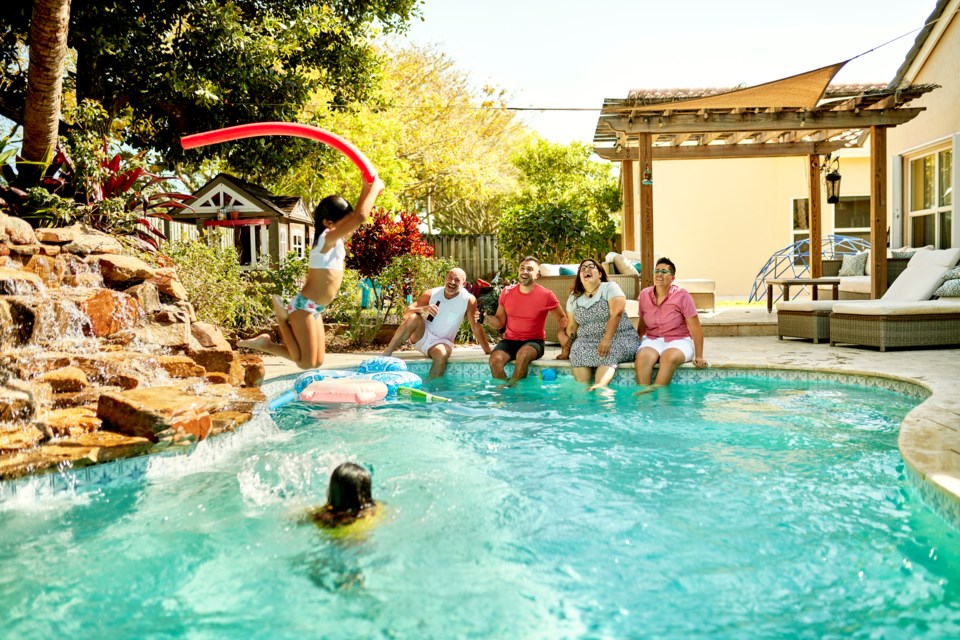With warm temperatures finally here to stay, many families in Moose Jaw are preparing to jump in the water, whether that be in a private pool, a public pool, or a lakeside beach — here’s what to remember to keep activities fun and safe.
Pools and water bodies are an awesome source of exercise, an escape from the heat, and provide a deal of enjoyment, but water-related incidents remain a leading cause of accidental death and injury worldwide. Water safety should be taken seriously to minimize the chances of sudden tragedy.
Understanding the risk
Drowning incidents most commonly occur because of complacency, inadequate supervision, and a lack of safety measures. Experienced swimmers are not immune — in fact, according to the Saskatchewan Lifesaving Society, overconfidence is a leading risk factor, leading to taking chances such as swimming while impaired by substances (most commonly alcohol), dismissing the need for a Personal Flotation Device (PFD) while boating or playing on a structure, and swimming alone.
In many cases, accidents happen in a moment of distraction. It is vital to recognize that drowning can happen silently and quickly, even in shallow water. Even small amounts of water accidentally inhaled into the lungs can cause shock and disorientation, silence calls for help, and make keeping one’s head above water while trying to recover a much more difficult task.
- Never engage in water activities alone!
- Take care of each other — watch for signs of distress, tiredness, or impairment, regardless of how experienced participants are.
- Wear a PFD/life jacket — PFDs protect against accidents, such as capsizing, striking one’s head or being struck, and becoming tired. They also enable swimmers and boaters in emergency situations to help others because they don’t have to spend all their energy on themselves.
- Plan for emergencies: Take water safety courses, keep emergency equipment maintained and inventoried, and respect the water.
Safety Tips for Parents:
- Active adult supervision: Never leave children unattended or unwatched, even for a moment. Active supervision means focused, maintained attention. Make the job that person’s official and only responsibility. Avoid distractions such as phone use, lengthy conversations, cooking, or yard work.
- Secure barriers: Private pool areas must be fenced, at least four feet high, with a self-closing and self-latching gate. Ensure there are no gaps that a small child could squeeze through.
- Take a CPR course: Knowing cardiopulmonary resuscitation (CPR) is less difficult than sometimes perceived. CPR instruction is kept as simple as possible so that emergency providers can remember it in fight, flight, or freeze situations. CPR can keep victims alive long enough for Emergency Medical Services (EMS) to arrive.
- Teach swimming skills: Enroll children in swimming lessons at accredited aquatic centers to improve their water safety and confidence in the water.
- PFDs: Ensure that children and inexperienced swimmers wear properly fitted life jackets when in or around water bodies.
- Clear the pool area: Remove toys, floats, and other enticing items from the pool when not in use to prevent attracting unsupervised children.
- Educate children: Teach children about pool safety rules, such as not running near the pool, not diving into shallow water, and never swimming alone.
- Establish pool rules: Implement clear and consistent pool rules for your family and guests. Enforce safety measures — being temporarily unpopular is worth it to minimize the risk of life-altering accidents.
- Emergency preparedness: Keep a phone nearby, have a well-stocked first aid kit and other emergency equipment, be trained and aware, and remember no one plans disasters into their day planner — accidents are a surprise.




